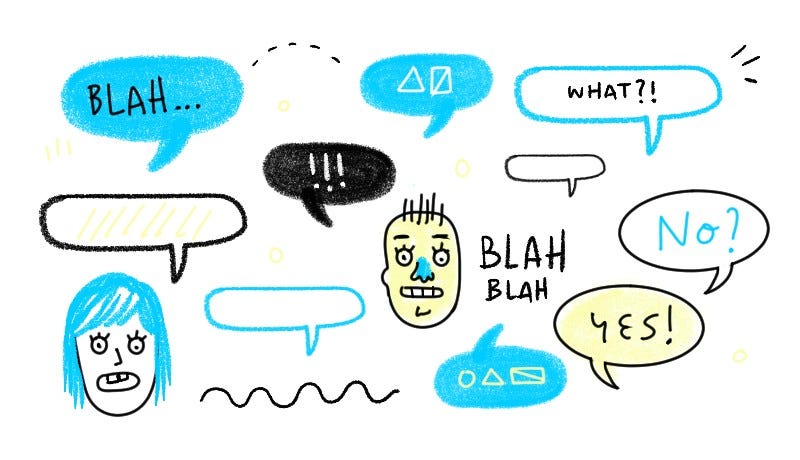Public speaking, embracing the idle mind, principles of data viz, and more UX links this week
What’s hot in UX this week.
What’s hot in UX this week.
If you like the links, don’t forget to 👏 👏👏👏👏👏👏👏👏👏👏👏👏👏👏.

Best practices for public speaking in design conferences and events →
We all reach a point in our careers when we start speaking in public. Designers, in particular, are pretty good at organizing conferences, panels, meetups, livestreams and other forms of publicly sharing knowledge with fellow designers.
But the unpredictability of public speaking can be nerve-racking at times. Here are a few things you can do to mitigate risks and make sure both you and your audience get the most out of that experience.
Interview with Fabricio Teixeira →
Recent interview by Interface Lovers with Fabricio Teixeira — one of the brains behind the UX polar bear — about career, design, inspiration and everyday tools.
Integrating animation into a design system →
Keeping animation choreography cohesive from the outset of a project can be challenging, especially for small companies without a dedicated motion specialist on the team. By Alla Kholmatova.
Mirrored atomicity: designers and developers speaking the same language →
The concept of atomic design is already well established, but designers and developers still use different component structures when working on their deliverables. By Vitor Guerra.
To those new to design →
It seems you have chosen design for a career (what a horrible decision you have made). Here’s a long list of advice to your design career. By Dylan Wilbanks.
Embracing the idle mind →
How being bored helps the mind wander and leads to higher creativity and better decision making. By Sebastian Lindemann.
Designing the perfect feature comparison table →
While we repeatedly buy some products almost mindlessly, for others, we take a lot of time to make a purchasing decision. Here’s how comparison tables can help.
How becoming a parent made me a better designer →
The experience of living with and caring for a newborn can help develop and hone a whole range of important and life enhancing skills. By Lena Tyo.
Five principles for good data visualization →
In the spirit of Dieter Rams’s ten principles for good design, here is a list of five principles for good data visualization.
Building block design: a modular design strategy for UXers →
An article that helps fill in the gaps of modular design models from a UX perspective. By Callie de Roussan.
News & Ideas
Cornea tells how many likes your photo will get before you post it
This company pre-negotiates work flexibility for women
Here are five science experiments happening during the solar eclipse
And the award of most liked tweet is goes to…
Dribbble is now entering the design recruiting space
A list of startups that were made without code
Cash.me has a new design
Brutalist web design finally gets a takedown
Google Allo now works on desktop computers
A breakdown of how the new Uber pickup feature was designed
The damaging myth of the loner genius nerd
What Blockchain means for designers, and vice-versa
Tired of coding? Here’s a PHP snippet bot
Tools & Resources
UX Whiteboard: a magnetic whiteboard shaped like a phone
Usabilityscale.com: automate your SUS measurement
1000 UI sound effects for your designs
Bot UI kit for Slack
Webflow University: video tutorials to learn how to use the tool
Interaction Design frameworks and foundations
Craftbot aggregates templates that can optimize your workflow
Product ratings summary: a list of best practices
Notepin is an extremely simple note-taking tool
Pointy Papers: free minimalist wallpapers for download
Product Graveyard: most memorable products that have gone away
Dead Domains finds buyers for your old domains
A year ago…
Death to complexity: how we simplified advanced search →
Our Advanced Search (AS) was hard to find. Small blue text beneath the map read ‘Show All Filters,’ which was an imperfect solution to the requirement that we maintain a list of clickable states (for SEO reasons), and that list be visible “above the fold”.
The states are, in a sense, filters, but they are very specific and essentially a dead end without other filters.



